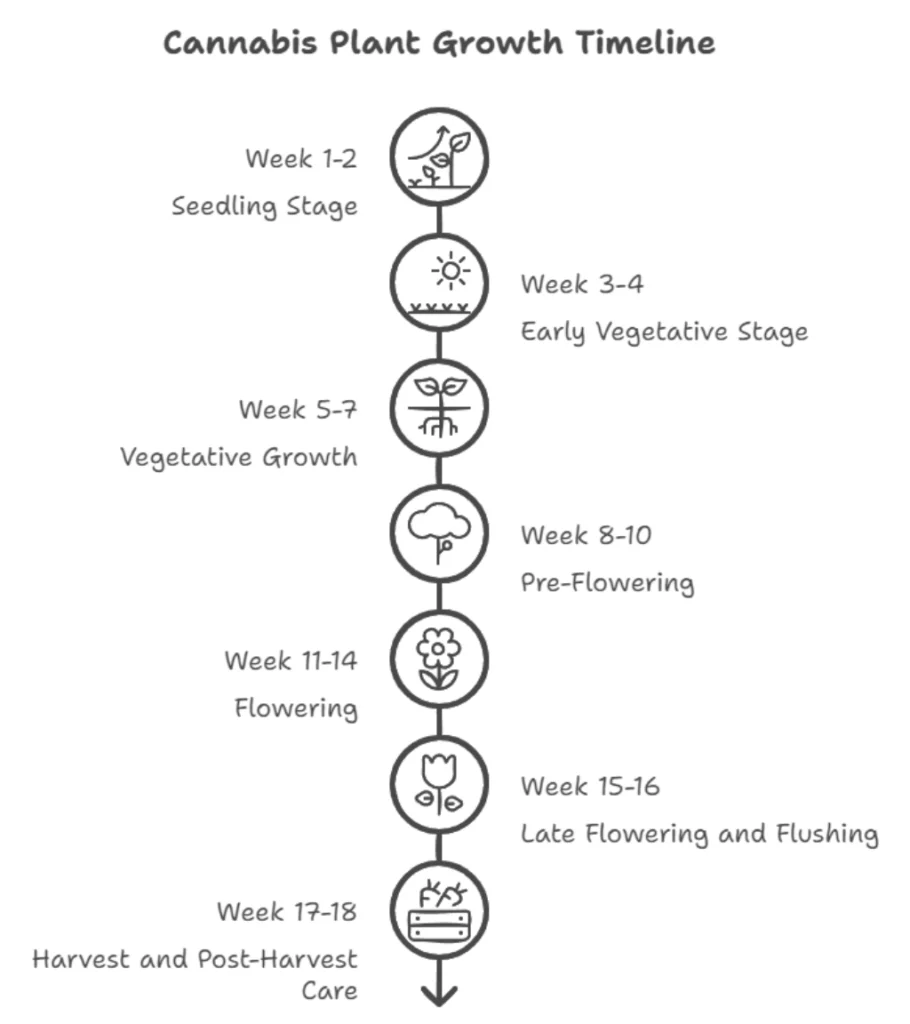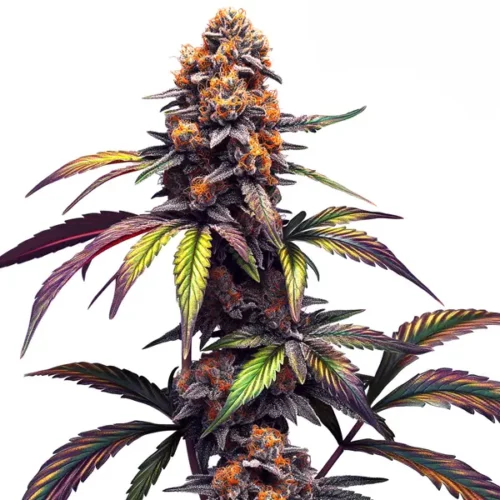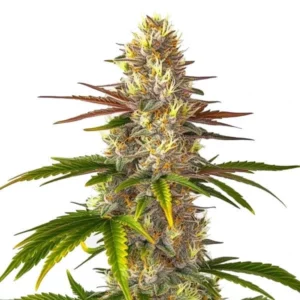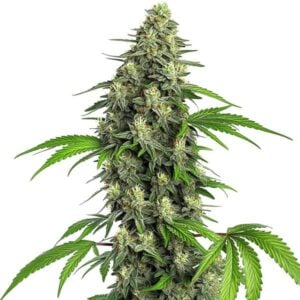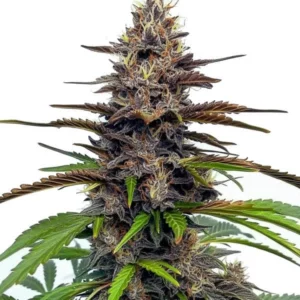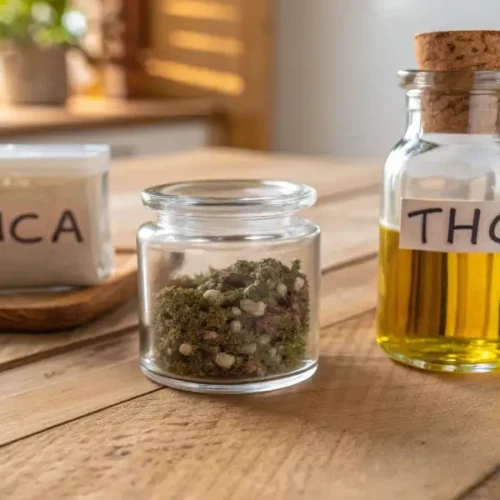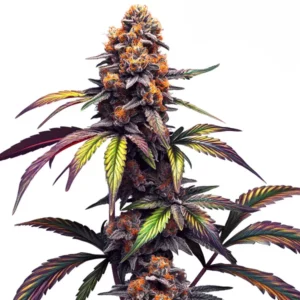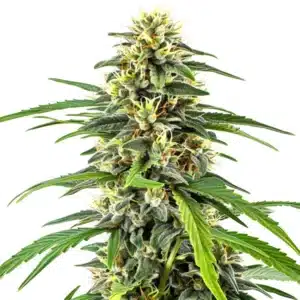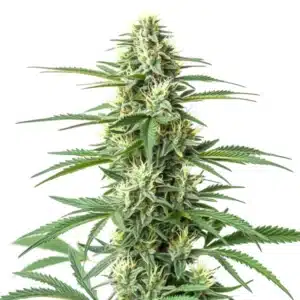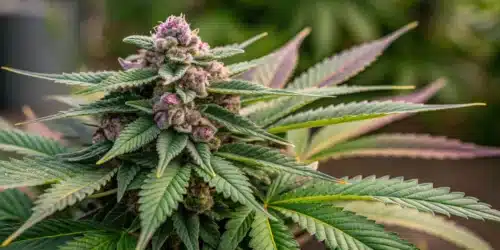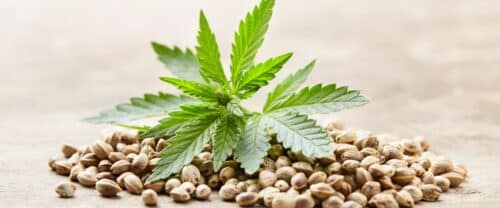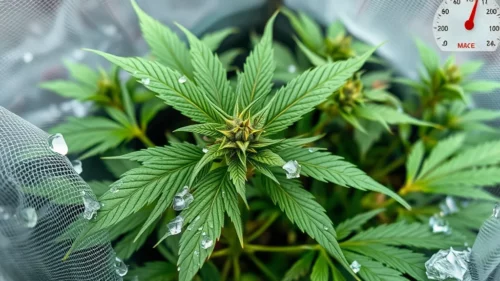From Blimburn Seeds, we bring you the best tips and tricks. Also, we are committed to all growers in the world to maximize their outdoor growing production. In other words, we will make you an expert grower and lover of our seeds.
Why choose MAMBA NEGRA CBG?
Mamba Negra CBG stands out as a strain that promises robust growth and a unique cannabinoid profile. For growers in Australia, it’s vital to pick a strain that not only thrives in the local climate but also offers the quality and benefits desired. This strain brings those qualities. It produces high amounts of cannabigerol (CBG), known for its potential health benefits, while also being resilient to various environmental challenges. When growing Mamba Negra CBG outdoors, you’ll find its hardy genetics help it adapt well to different regions, from the hot, arid outback to the more temperate coastal areas.
Recommended Strains
Mamba Negra CBG
 Type of seed: CBG
Type of seed: CBG Phenotype: Mostly Indica
Phenotype: Mostly Indica Day to flower: 8 - 10 weeks
Day to flower: 8 - 10 weeks
Northern Lights
 THC: 17%
THC: 17% Type of seed: Feminized
Type of seed: Feminized Phenotype: Mostly Indica
Phenotype: Mostly Indica Day to flower: 8 - 10 weeks
Day to flower: 8 - 10 weeks
This strain offers a moderate growth height, which makes it perfect for outdoor cultivation, even if you have limited space. It’s easy to manage and doesn’t require a greenhouse to flourish. The aroma, flavor, and effects of Mamba Negra CBG add more reasons to grow this gem outdoors. The plants develop dense, dark green foliage, which hints at its strength and robust growth potential. Moreover, its CBG content provides a different experience compared to THC-heavy strains, offering a clearer, more focused effect without the intense high
Promos & Deals
Do you think you can grow outdoors in AUSTRALIA?
Absolutely, and Australia’s unique climate offers some advantages when growing Mamba Negra CBG outdoors. But before diving into the specifics, it’s important to be aware of the different growing conditions across the continent. Knowing these can help guide you toward the right cultivation strategies for a healthy Mamba Negra CBG harvest.
Geographic in Growing Mamba Negra CBG Outdoors
Australia’s unique geography presents different challenges and opportunities depending on where you plan to grow. In the northern regions, warmer temperatures dominate year-round, which can speed up growth but also stress plants if they’re not properly hydrated. In contrast, the southern areas offer more moderate climates, with cooler winters and warm summers, providing a longer growing season for Mamba Negra CBG. This strain thrives when it gets enough warmth and sunlight during its vegetative and flowering stages, so choose your outdoor spot wisely.
If you’re in an area with intense sunlight, ensure your plants receive some shade during the hottest parts of the day. In cooler regions, consider using reflective surfaces or light-colored walls near your grow area to maximize sunlight exposure. Proper airflow and drainage are essential, regardless of location, as they help prevent mold and other diseases common in humid environments.
Outdoor Growing: North and South Regions
North: In the north, high humidity can attract pests like spider mites and whiteflies. To combat this, consider using organic pest deterrents such as neem oil or insecticidal soap. Additionally, pruning the lower branches and leaves improves airflow around the plant, reducing moisture buildup and the risk of mold. For those hot summer days, consider installing a shade cloth to protect your plants from excessive heat stress.
The high humidity during flowering increases the risk of mold. Employ preventive measures like pruning excess foliage to improve airflow and placing fans near the growing area if possible. If rainfall becomes excessive, consider constructing a simple rain shelter using a tarp to prevent water damage.
South: Southern Australia offers cooler conditions, which means you need to be mindful of frost, especially during the early and late parts of the season. Covering your plants with frost blankets on colder nights can prevent potential damage. If your soil has a high clay content, it may retain excess moisture after rainfall, so make sure to provide proper drainage to avoid waterlogging the roots.
Shorter daylight hours during the flowering stage can sometimes slow growth. Utilize reflective surfaces around your plants to capture and direct more sunlight onto the foliage. As the nights get cooler, consider adding mulch around the plant base to insulate the roots and retain soil warmth.
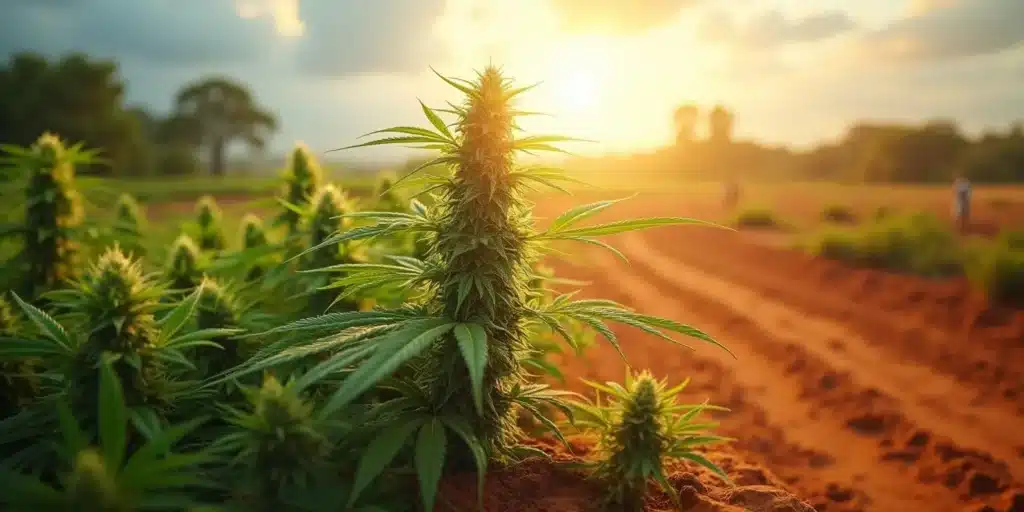
Soil: The Foundation of Strong Growth
Mamba Negra CBG thrives best in nutrient-rich, well-draining soil. Start with a quality organic soil mix that contains compost, peat, and perlite. This provides the necessary nutrients for early growth while maintaining the right moisture level. Soil health is essential throughout the growing cycle, so it’s wise to add worm castings or organic fertilizers periodically to boost nutrition.
In Australia’s varied environments, soil can be sandy, clayey, or loamy. If your native soil isn’t ideal, mix it with organic matter to improve its texture and fertility. Sandy soils drain quickly, so incorporate compost to retain moisture. For clay-heavy soils, use perlite or coco coir to increase aeration and prevent waterlogging. Testing soil pH is another step to consider, aiming for a slightly acidic level between 6.0 and 7.0, which suits Mamba Negra CBG’s nutrient uptake.
Negra CBG outdoors. Over time, plants will drain the soil of essential nutrients, requiring consistent replenishment. Add organic compost to the soil every few weeks to boost nutrient levels and improve its structure. Compost introduces helpful microorganisms that break down organic matter, creating a fertile setting for root development.
For outdoor growers in Australia, soil pH can be affected by regional factors, like rainfall and native soil composition. Aim to keep the pH level between 6.0 and 7.0 for optimal nutrient uptake. Test the soil periodically using a pH testing kit and make adjustments if necessary. To lower the pH, use materials like sulfur or organic matter; to raise it, add lime. This process ensures Mamba Negra CBG has access to all the nutrients it needs for vigorous growth and resin production.
Photoperiod: Managing the Light Cycle
Mamba Negra CBG, like most cannabis strains, is photoperiod-sensitive. It relies on the natural change in daylight hours to signal its transition from the vegetative to the flowering stage. When growing Mamba Negra CBG outdoors in Australia, timing is everything. The natural daylight hours fluctuate depending on the season and your specific location. In the southern regions, summer days are longer, providing an extended vegetative phase that encourages more robust growth. This sets the stage for a more bountiful harvest.
In northern Australia, where daylight hours don’t vary as much throughout the year, you need to monitor plant size and growth rate more closely. To manage the transition to flowering, you might have to use light deprivation techniques, such as covering the plants in the late afternoon, to simulate shorter days. This method helps trigger the flowering phase if natural conditions don’t align with your growth timeline.
Nutrients: Fuel for Growing Mamba Negra CBG Outdoors
Nutrients are the lifeblood of your plants, especially when growing a robust strain like Mamba Negra CBG. This strain requires a balanced nutrient profile that evolves as it grows. During the vegetative stage, prioritize nutrients rich in nitrogen to promote lush foliage. Organic fertilizers like fish emulsion or compost tea work wonders at this stage. As the plant transitions into flowering, shift the focus to nutrients higher in phosphorus and potassium. Bone meal, guano, or specialized flowering nutrients can aid in bud development and resin production.
Outdoor growers in Australia face unique challenges like varying soil fertility and nutrient leaching due to rain. Combat these issues by using slow-release organic fertilizers and applying liquid feeds during watering. Monitor your plants regularly for signs of nutrient deficiencies, such as yellowing leaves or stunted growth. Quick adjustments can make a significant difference in overall yield quality. The goal is to maintain a nutrient-rich environment that supports the plant’s needs without overwhelming its natural growth cycle.
Health and Maintenance
Maintaining plant health is the cornerstone of success when growing Mamba Negra CBG outdoors. Outdoor environments expose your plants to varying conditions, including weather changes, pests, and diseases. Regular health checks will prevent small problems from turning into major issues. Look for any signs of stress, discoloration, or pests daily.
Proper watering practices are key to maintaining healthy plants. Overwatering may cause root rot, while underwatering leads to nutrient deficiencies. It’s important to water deeply and let the soil dry slightly between sessions. In Australia’s warmer regions, this could mean watering every couple of days, whereas cooler areas may need less frequent irrigation.
Growing Mamba Negra CBG outdoors requires vigilance against pests and diseases. One of the most effective preventive measures is companion planting. Surround your cannabis plants with pest-repellent herbs like basil, mint, or marigold. These plants naturally deter common pests while promoting a healthier ecosystem in your garden.
Additionally, Mamba Negra CBG benefits from regular foliar feeding with seaweed extract. This organic supplement strengthens the plant’s defenses against pests and environmental stressors, helping it remain resilient throughout the growth cycle. By focusing on proactive care, you reduce the likelihood of encountering severe health issues that can affect your harvest quality.
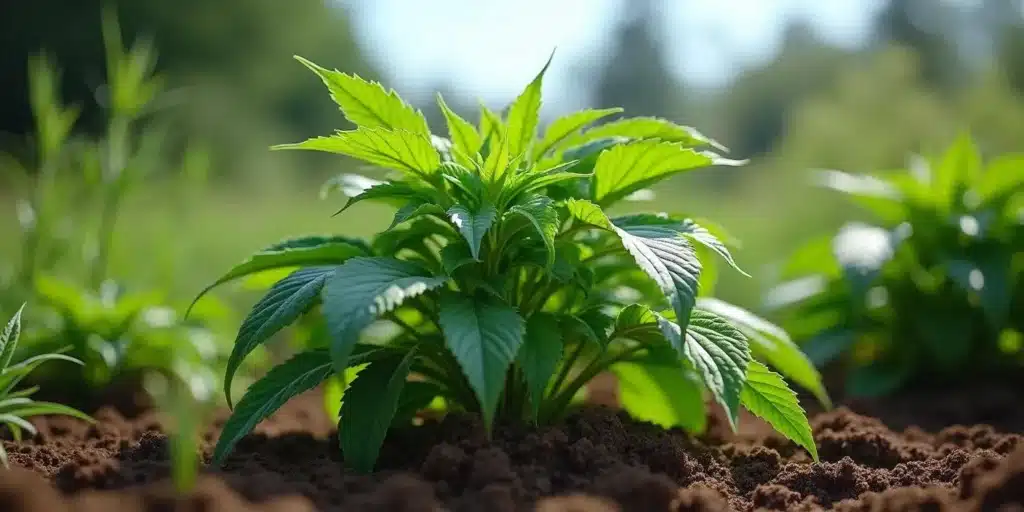
Cultivation: Week-by-Week Care for Growing Mamba Negra CBG Outdoors
Growing Mamba Negra CBG outdoors successfully, you need a week-by-week plan tailored to Australia’s changing seasons. Here’s a general guide to keep your plants thriving:
Weeks 1-2 (Seedling Stage):
During the initial stage, the seedlings are delicate and require careful handling. Plant your Mamba Negra CBG seeds in small pots filled with a light, well-draining soil mix. Keep them in a shaded area until they develop a couple of sets of true leaves. Ensure consistent moisture by misting the soil lightly, avoiding waterlogging that could cause root rot.
Weeks 3-6 (Early Vegetative Stage):
As your plants establish their root system, they need more direct sunlight. Move them to a sunnier spot outdoors, gradually increasing their exposure to full sun over several days. Begin feeding them a mild nitrogen-rich nutrient solution to promote foliage growth. Keep an eye on pests like aphids or spider mites, as young plants are more vulnerable.
Weeks 7-10 (Late Vegetative Stage):
Now, your Mamba Negra CBG plants will show vigorous growth, with branches spreading out and new leaves appearing rapidly. Increase your nutrient feeding, ensuring a balanced mix that supports continued growth. If you’re in northern Australia, this is also the time to consider light deprivation techniques if you want to control the flowering start.
Weeks 11-14 (Early Flowering Stage):
Your plants will now start showing pre-flowers, signaling the transition to the flowering stage. Adjust your nutrient mix to increase phosphorus levels, which will aid in bud development. Keep a close eye on the plants for any nutrient deficiencies, making changes to feedings as needed. Water consistently, but be careful not to wet the buds to reduce the risk of mold.
Weeks 15-20 (Late Flowering Stage):
As buds swell, reduce nitrogen feeding and focus on potassium-rich nutrients. This helps increase the density and potency of your Mamba Negra CBG flowers. Inspect your plants daily for signs of mold or pests. In southern Australia, where nighttime temperatures might drop, consider using protective measures like row covers to shield the plants from sudden cold snaps.
Harvest: Timing Is Key
Harvesting at the right time is essential for maximizing the potency and quality of your Mamba Negra CBG buds. Outdoors, the ideal harvest window usually falls between late March and early May in Australia. This period allows the buds to mature fully under natural conditions. Monitor the development of trichomes; when they shift from clear to milky, it’s a clear indication your plants are ready.
In regions with unpredictable weather, plan for an early harvest if heavy rains or frost are forecasted. A delayed harvest in such conditions risks mold and diminished potency. Utilize scissors or pruning shears for a clean cut during harvest, preserving the structure of the buds for the curing process.
